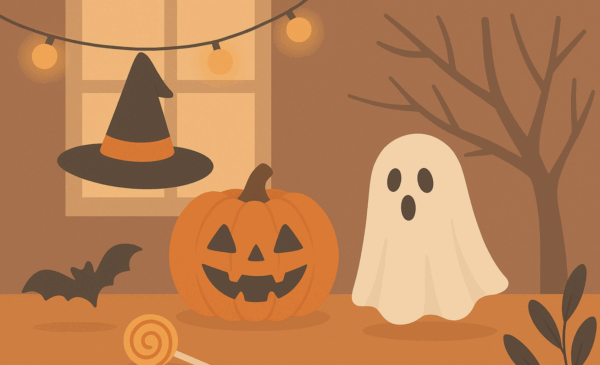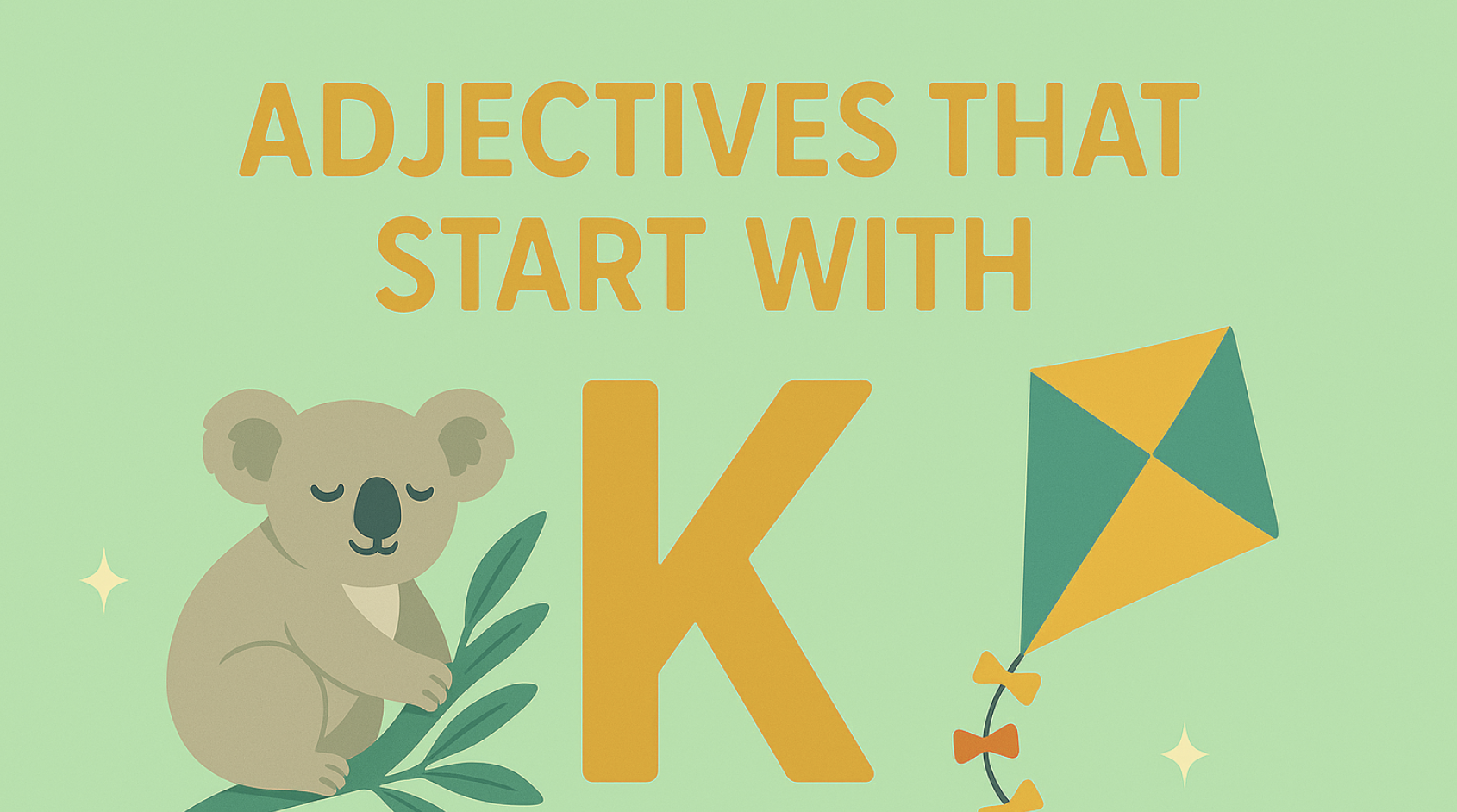“Barry’s big brown bulldog barked bravely at the bouncing beach ball.”
Now that’s a sentence with some serious style—and a mouthful of B’s.
What you just read is a classic case of alliteration: the artful repetition of initial consonant sounds that gives language rhythm, energy, and a little bit of flair. It’s the secret sauce behind everything from tongue twisters and Shakespearean soliloquies to catchy brand slogans and memorable headlines.
But don’t worry—you don’t need to be a poet or a linguist to use it. Whether you’re a writer, marketer, student, or just someone who enjoys the occasional literary flex, knowing how to use alliteration in a sentence can seriously sharpen your communication game.
What Is Alliteration in a Sentence?
Alliteration is a literary device where the same consonant sound is repeated at the beginning of two or more closely connected words. It’s not just about matching letters—it’s about matching sounds.
Let’s break it down.
Take this sentence:
“Samantha silently sipped her sweet soda.”
The soft “S” sound runs through most of the words, creating a subtle musicality. That’s alliteration in action.
A Quick Rule of Thumb:
- It’s about sounds, not letters.
For example, “clever cat” is alliteration (repeated “k” sound), but “charming character” might not be—since “ch” and “c” don’t always make the same sound. - The repetition should be noticeable but natural.
If you’re forcing six words with the same letter into one sentence just to show off… your reader will notice. And not in a good way.
Alliteration often shows up in:
- Poetry and literature
- Speeches and song lyrics
- Brand names (PayPal, Dunkin’ Donuts)
- Children’s books (hello, Dr. Seuss)
- Even in everyday writing, when you want a phrase to pop
It’s a simple tool, but when used well, it can add rhythm, reinforce meaning, and make writing more memorable. Think of it as a stylistic spice—one dash is delightful, five spoonfuls might overwhelm the dish.
Your Publishing Journey Awaits – Start NowWhy Use Alliteration in Writing?
There’s a reason we remember names like Coca-Cola and Mickey Mouse—they roll off the tongue like they were meant to be remembered. That’s the magic of alliteration. It’s not just about sounding fancy or poetic; it’s about making your words work harder.
One of the biggest advantages of using alliteration is memorability. Our brains are wired to notice patterns, and repeating sounds is one of the simplest, most effective patterns in language. Whether it’s a slogan, a poem, or even a job title (Senior Strategy Specialist, anyone?), those repeated consonants catch the ear and stick around.
But alliteration isn’t just about sticking in someone’s head—it’s also about style. Repetition gives writing rhythm, and rhythm gives writing life. Think about how it feels to read, “The cold, cruel cliffside cracked beneath her feet.” The sentence isn’t just saying something—it’s doing something. The repeated “c” sounds add tension and urgency. You’re not just reading words, you’re feeling them.
Tone matters too. Gentle sounds like “s” or “l” can create a soft, soothing effect: “The silent lake shimmered under silver light.” Meanwhile, harsher sounds like “b” or “k” can build intensity: “Bold boys battled bitter boredom.” You can shape a reader’s emotional experience without ever spelling it out.
And then there’s the fun factor. Let’s not pretend alliteration isn’t a little bit playful. It’s why kids love tongue twisters, why writers love clever headlines, and why marketers use it in product names. It adds a spark, a wink—something that makes your sentence feel just a little more alive.
That said, moderation is everything. A well-placed alliterative phrase can be brilliant. A paragraph packed with P’s, B’s, and Z’s? Not so much. Like any seasoning, use it wisely.
In short: alliteration isn’t just for poets and ad execs. It’s for anyone who wants their words to sound better, feel stronger, and stick longer. And once you start noticing it, you’ll see it everywhere.
How to Use Alliteration in a Sentence (Without Sounding Like a Tongue Twister Contestant)
So, you’re ready to write a sentence that sings. Great news: using alliteration isn’t hard—but using it well takes a little finesse. The goal isn’t to sound like you’re auditioning for a Dr. Seuss reboot (unless that’s exactly what you’re doing). Instead, it’s about enhancing your message with rhythm and flow.
Step 1: Choose Your Focus Word
Start with the idea or image you want to highlight. Let’s say you’re writing about a storm. You might pick a word like “howling” or “brutal” as your anchor—something that captures the mood.
Now, look for other words that start with the same consonant sound (not just the same letter). For example:
“The howling hurricane hammered the harbor.”
The repeated “h” sound intensifies the sentence and makes it more vivid.
Pro tip: Focus on sound, not spelling. “Cat” and “circle” both start with “c,” but they don’t alliterate—unless your cat seriously has a lisp.
Step 2: Keep It Natural
Here’s where many people go wrong: they fall in love with the sound and forget the sentence needs to make sense. Alliteration should feel effortless—not like you spent six hours squinting at a thesaurus just to write, “Fierce flamingos flailed feverishly for freedom.”
If it sounds like a poem but reads like a riddle, scale it back. Alliteration works best when it supports your meaning, not when it is the meaning.
Step 3: Use Moderation (Like Hot Sauce)
You don’t need alliteration in every line. A dash of repetition here and there can make a sentence sing—but too much, and your readers will feel like they’ve walked into a children’s TV show hosted by a thesaurus.
For instance:
- Works well: “Deliberate decisions drive development.” (Clean and punchy.)
- Does not work: “Daring developers dynamically deploy diverse, delightful digital dreams.” (Please make it stop.)
Step 4: Read It Out Loud
Alliteration is about sound, so use your ears. If the sentence feels clunky, try switching a word or two. The best alliterative sentences have a rhythm that feels smooth—almost like a little melody. Think of it as word jazz: if it grooves, you’re good.
Done well, alliteration adds power, personality, and polish to your writing. And once you get the hang of it, you’ll find yourself using it instinctively—whether you’re drafting an email, naming a product, or just trying to write a sentence people will actually remember.
Example of Alliteration in a Sentence (and a Few You’ll Actually Want to Steal)
Now that you know the “how,” let’s talk about the “show.” Alliteration works best when it’s woven seamlessly into a sentence—subtle enough to feel natural, but strong enough to add rhythm and punch.
Here are some crisp examples of alliteration in a sentence that showcase different tones, moods, and styles.
Classic and Clean
“She sells seashells by the seashore.”
Yes, it’s a tongue twister—but it’s also one of the oldest, most iconic examples of alliteration ever.
“The wild wind whipped through the willows.”
Gentle yet dramatic. A poetic way to add motion and mood.
“Time ticks tirelessly toward tomorrow.”
Abstract and philosophical, but still fun to say out loud.
Everyday and Natural
“Larry left late for lunch.”
This could be in a short story, a daily journal, or even a Slack update. It’s casual but still has that lyrical touch.
“Marketing makes momentum measurable.”
Okay, it’s slightly corporate—but admit it, it sounds good in a pitch deck.
“Bold brands build better bonds.”
Snappy, slogan-friendly, and sounds like it belongs on a billboard.
Clever and Creative
“Greedy goblins grabbed gold and growled gleefully.”
Perfect for fiction or fantasy writing—full of imagery and sound.
“Fluffy feathers floated freely from the flamingo.”
Playful and vivid, with a lovely light rhythm. Try saying it five times fast.
“Silent snakes slithered softly through the sand.”
Sensory and atmospheric. You can almost hear it.
Fun, But a Little Extra
“Barbara baked banana bread before breakfast.”
Not a tongue twister yet, but it’s getting there.
“Daring detectives dove dramatically into danger.”
A bit over-the-top, but fun to write—and even more fun to read aloud.
As you can see, alliteration is incredibly flexible. You can use it to set a mood, create a memorable phrase, or simply make a sentence sound more interesting. Whether you’re aiming for poetic elegance or playful punch, a little alliteration goes a long way.
How to Identify Alliteration in a Sentence (Without Getting Tricked by Spelling)
Identifying alliteration might seem like a no-brainer—just look for words that start with the same letter, right?
Well… not quite.
While spelling can give you a clue, alliteration is all about sound. That’s what makes it effective—and sometimes sneaky. Let’s walk through how to spot it like a pro.
Step 1: Listen, Don’t Just Look
Take this sentence: “Kevin kicked the kettle.”
That’s alliteration. The repeated “k” sound is clear and consistent.
Now consider: “Cute kittens chase curious children.”
That’s also alliteration—each word starts with the hard “k” sound, even though it’s spelled with a “c” in some places.
Now this one: “Charlie chose a chocolate croissant.”
All those “ch” sounds work together. The key? Your ear knows before your eyes do.
Step 2: Don’t Be Fooled by Letter Tricks
Not all repeated letters make alliteration. For example: “George got a giraffe.”
Sounds good, but not alliterative. Why? Because “George” starts with a “j” sound, and “giraffe” also starts with a “j” sound—even though they both begin with “g.”
Now look at this: “Gary grabbed grapes.”
This is alliteration—because the hard “g” sound is repeated.
So if it’s sounding confusing, just remember: Sound > Spelling.
Step 3: Look for Stressed Consonants (Not Just Fillers)
Alliteration typically focuses on stressed syllables. For instance: “The big brown bear bit the banana.”
Even though there are short words like “the” and “bit” in there, the focus is on the repeated “b” sounds in the key nouns and adjectives. That’s where the impact happens.
So when you’re scanning a sentence for alliteration, pay attention to the important words—not the glue words holding them together.
Quick Check: Is This Alliteration?
Try this little test. Read the sentence out loud. Does it have a beat or bounce to it? Do your lips feel like they’re repeating the same motion at the start of words? That’s your clue.
Still unsure? Say it again. If it feels musical—or like you accidentally wrote the opening to a children’s book—you’ve probably nailed it.
Common Misconceptions and Mistakes About Alliteration
Alliteration can do wonders for your writing—when it’s used the right way. But like most creative tools, it’s easy to get carried away (or confused entirely). Let’s walk through a few common slip-ups that trip people up, and how you can avoid them.
Mistake #1: Focusing on Letters Instead of Sounds
This is the big one. Alliteration is about sound, not spelling.
You might see “cat” and “circle” and think, “Hey! Same first letter—must be alliteration.”
But those two words actually start with completely different sounds—“k” and “s.”
Now try “cool cats cuddle quietly.” That’s real alliteration.
Your ears know the truth—so when in doubt, say the sentence out loud. If the starting sounds don’t match, it’s not the real deal.
Mistake #2: Using Too Much Alliteration at Once
It’s tempting to go all-in, especially once you get the hang of it. But remember: you’re not trying to win a tongue twister championship (unless you are, in which case—carry on).
A little alliteration adds elegance. A lot can feel like you’re force-feeding the reader alphabet soup.
Compare these:
“Creative campaigns catch attention.”
“Creative, calculated, courageous copywriters constantly craft catchy, compelling campaigns.”
One sounds polished. The other sounds like it needs a nap.
Use it to add flavor—not to overwhelm the dish.
Mistake #3: Mixing Up Alliteration with Other Sound Devices
It’s easy to confuse alliteration with rhyme or assonance—they’re all about sound, after all.
- Rhyme is when the ends of words match: “bright night.”
- Assonance is repeated vowel sounds inside words: “go slow over the road.”
- Alliteration is repeated starting consonant sounds: “friendly foxes.”
They’re all useful—but different. Think of them like siblings. Similar energy, different talents.
Mistake #4: Using Alliteration Just to Sound Fancy
We get it. Alliteration can be fun and impressive. But if it doesn’t add meaning or improve the flow, it’s just showing off.
Let’s say you’re writing a product description.
- Saying “sleek, stylish sound system” adds some flair.
- But “sleek, stylish, sensational, silver, sonic sound system”? That’s a mouthful—and not in a good way.
Always ask: Does this help my sentence, or just draw attention to itself? If it’s the latter, dial it back.
The Bottom Line? Use It Intentionally.
Alliteration isn’t something you sprinkle randomly into every sentence. It’s a tool—a really cool one—but only when used with purpose. It should enhance your writing, not distract from it.
If you want to highlight a key idea, make a phrase more memorable, or create a bit of rhythm—go for it. Just don’t forget: subtle is powerful.
When and Where to Use Alliteration
Now that you know how to use alliteration (and what not to do), the next question is: when should you actually use it? The answer depends on what you’re writing—and what kind of impact you want to make.
Let’s explore a few places where alliteration doesn’t just work—it shines.
1. In Creative Writing: Paint with Sound
Whether you’re writing a poem, a short story, or a novel, alliteration is a simple way to give your prose a bit more texture.
It can help you:
- Set the mood (“The dark, desolate desert dragged on.”)
- Build character voice (“Marty muttered, muddled and moody.”)
- Add a poetic rhythm without diving into full-on verse
It doesn’t have to be dramatic—just enough to make your words feel intentional and alive.
2. In Children’s Books: Make It Musical
Kids love repetition. That’s why so many children’s books are packed with it—and alliteration is a big part of that magic.
Sentences like “Bobby bounced his big blue ball” aren’t just cute—they’re fun to say. They help young readers hear patterns, build language skills, and stay engaged.
Bonus: it also makes your book easier to memorize for parents who’ll be reading it 47 times in a row.
3. In Speeches and Slogans: Be Memorable
Want your words to stick? Alliteration makes lines more catchy and quotable.
Think of:
- “Reduce, Reuse, Recycle”
- “Dunkin’ Donuts”
- “Make America Great Again”
Love them or hate them, these phrases are hard to forget—and that’s the point.
If you’re giving a speech, pitching a product, or trying to sum up a message in one punchy line, alliteration helps lock it in your listener’s memory.
4. In Marketing and Branding: Add a Hook
Marketers use alliteration all the time—because it works. A well-placed pair of matching consonants can make a product sound more appealing, fun, or premium.
Compare:
- “Fast Cleaning Service”
vs. - “Speedy Sparkle Solutions”
The second one may not clean any better—but it certainly sounds like it might.
Alliteration is especially useful in headlines, taglines, product names, and email subject lines—anywhere you need to grab attention fast.
5. In Everyday Writing: Give Your Sentences a Lift
You don’t need to be writing a bestseller or running a brand campaign to use alliteration. It can work just as well in a blog post, a job title, a social media caption, or even an email.
You might describe someone as a “dedicated, driven designer,” or call your next newsletter “Friday Focus.”
Used with care, it gives your writing that extra polish—that little something that makes people pause and think, “Ooh, that sounds good.”
The Key: Match the Mood
Alliteration can be serious, silly, subtle, or bold—it all depends on your tone. A sentence like “peaceful petals pressed against the pane” feels very different from “greedy goblins grabbed gold.”
So when you’re deciding where to use it, ask yourself:
What mood am I creating?
What feeling do I want the reader to walk away with?
Will a little alliteration help underline that?
If the answer’s yes, go for it.
Key Takeaways
So there you have it—alliteration isn’t just a literary trick for poets and playwrights. It’s a surprisingly versatile tool that can bring your writing to life, whether you’re crafting fiction, pitching products, or just trying to make your sentences a little more memorable.
When used with purpose, alliteration helps you:
- Add rhythm and flow
- Emphasize key ideas
- Set a tone or mood
- Create phrases that stick in people’s heads
But like any good thing, it works best in moderation. The goal is to enhance your message, not overshadow it.
Try It Yourself
Here’s a challenge: Write your own alliterative sentence—just one. Keep it simple, fun, and meaningful.
Need a starting point? Pick a word you like—light, brave, summer, coffee, storm—and build a sentence where most of the key words begin with the same sound. You’ll be surprised how naturally it starts to flow.
Or if you’re feeling bold, drop your best one in the comments (or your group chat, or your next email subject line). Bonus points if it makes someone smile.
FAQs – Aliteration in a Sentence
Q: What is an example of alliteration in a sentence?
An example of alliteration is: “Sally silently slipped into the sea.” In this case, the repeated “s” sound at the beginning of key words creates a smooth, flowing rhythm. Alliteration often uses consonant sounds to enhance the tone or mood of a sentence. It’s a great way to make your writing more engaging and memorable.
Q: How do you use alliteration in a sentence?
To use alliteration, choose a starting sound—typically a consonant—and repeat it at the beginning of key words in your sentence. These words should be close together so the repetition feels intentional, not random. For example: “Brilliant books bring bold breakthroughs.” The trick is to use it naturally, without forcing awkward phrasing just for the sake of the sound.
Q: What is the purpose of alliteration in writing?
Alliteration adds rhythm, flow, and emphasis to your writing. It can make phrases more memorable, create mood, and help important ideas stand out. Writers use it in everything from poetry to marketing to give language a musical quality. When done right, it enhances the reader’s experience without being too obvious.
Q: Can alliteration use different letters?
Yes—as long as the sound at the beginning of the words is the same, the letters can be different. For example, “crazy” and “kick” both begin with a hard “k” sound, so they can work in an alliterative phrase. On the other hand, “circle” and “cat” start with the same letter but use different sounds, so they wouldn’t qualify. Alliteration is all about matching initial consonant sounds, not matching letters.
Q: What’s the difference between alliteration and rhyme?
Alliteration repeats the beginning consonant sounds of words, while rhyme focuses on ending sounds. For example, “big blue balloon” is alliteration, while “night” and “light” form a rhyme. Both add musicality to writing but serve different stylistic purposes. You can use both together, but they’re not the same technique.
Q: Is alliteration only used in poetry?
Not at all! While poetry is known for using alliteration, it also appears in everyday writing, speeches, brand names, children’s books, and marketing. Think of slogans like “Dunkin’ Donuts” or *“Reduce, Reuse, Recycle”—*these are alliterative and designed to stick in your mind. So whether you’re writing fiction or crafting a catchy headline, alliteration is a tool worth using.
Q: What are some famous examples of alliteration?
Famous examples include “She sells seashells by the seashore” and “Peter Piper picked a peck of pickled peppers.” In literature, you’ll find it in lines like Poe’s “deep into that darkness peering…” or Shakespeare’s “From forth the fatal loins of these two foes.” These phrases are memorable because the repeated sounds make them rhythmic and engaging. That’s the power of alliteration—it sticks.
Q: How do you identify alliteration in a sentence?
To identify alliteration, read the sentence aloud and listen for repeated initial consonant sounds in nearby words. Don’t rely solely on spelling—focus on how the words sound when spoken. Words like “cat” and “kick” both start with a hard “k” sound and may alliterate, even though they’re spelled differently. Once you tune your ear to the sound patterns, spotting alliteration becomes second nature.







